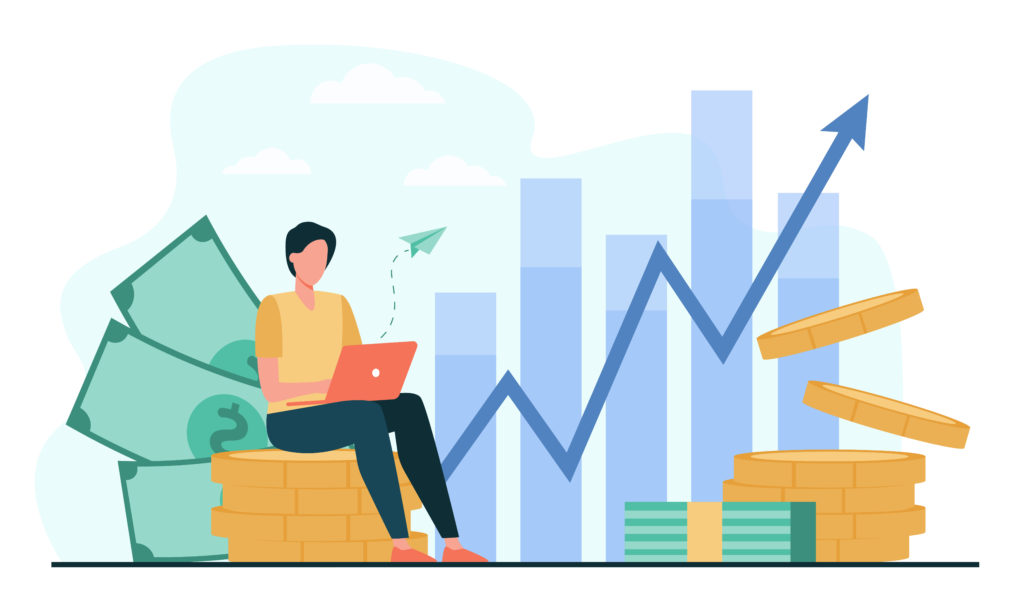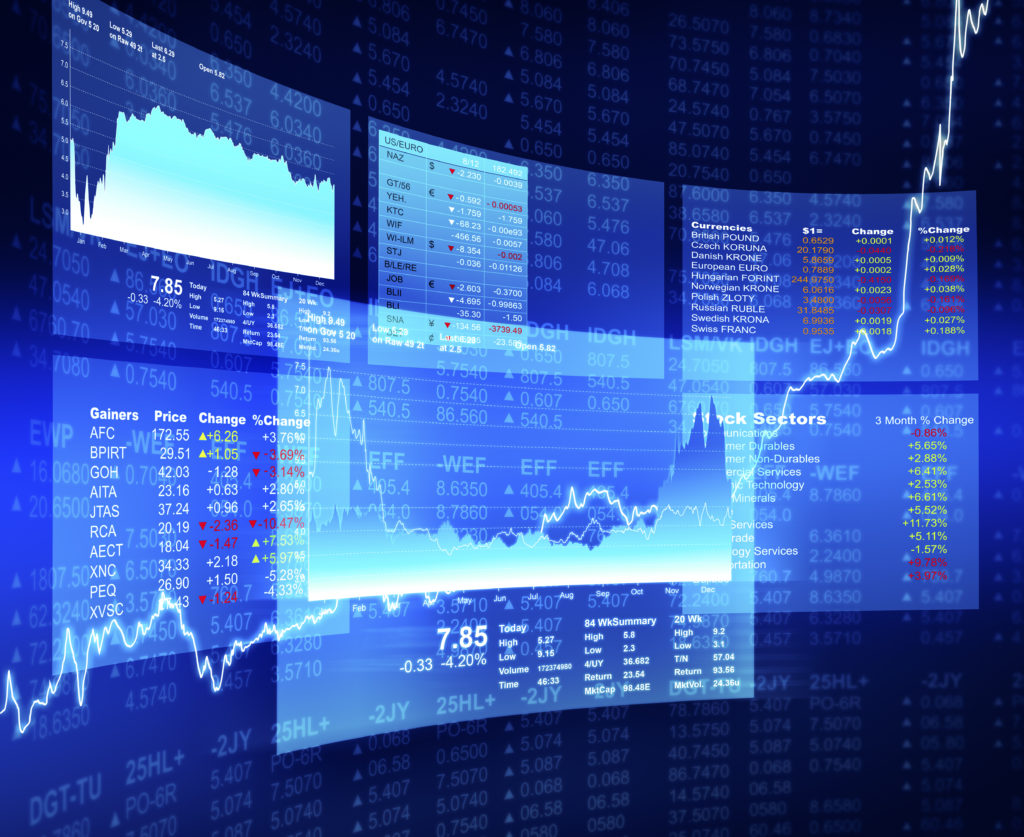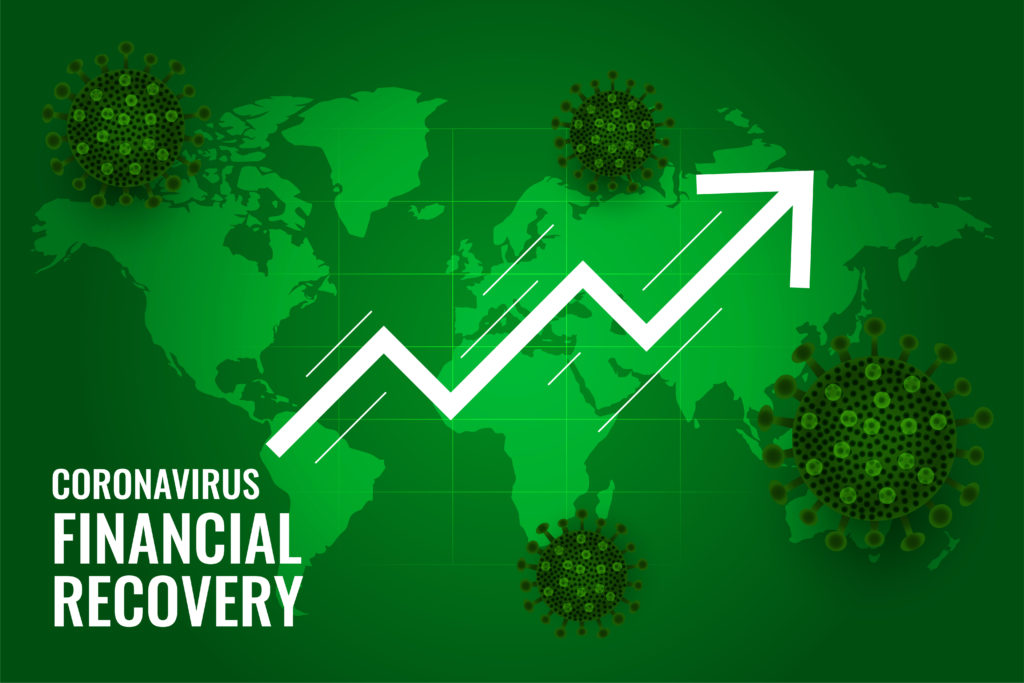The capital market is the heart of the economic position of a country. Stock market plays a crucial role in the growth of business and trade of a nation which influences the economy. The investor who is having additional money could invest in securities or in some other resources like gold, land or could just remit in his/her bank account. At present, a wide assortment of investment options is available like National Reserve Funds Endorsements, Indira Vikas Patra, Kisan Vikas Patra, Mutual Funds, Insurance Plans, Chits, Company Shares, Bank Fixed Deposits, Company Fixed Deposits, Provident Fund, Bonds/Debentures, Postal Investment Funds Plans, Government Securities, and Real Estate and others to the investors to suit their requirements and nature. The decision of the investor is based on the degree of return and the risk.
Ever since Covid-19 strike, markets have been under fear as uncertainty reveals. Global capital markets have witnessed the financial crisis of 2008 and US & European countries announced bailouts packages to recover the economic growth. It’s noticed that there is a strong correlation with the market trends and index of the global markets as BSE and Nifty fell 39% in the global crises period. Indian stock market has reflected the sentiments during this pandemic unleashed upon regular investors. While the world has witnessed many financial crises in the past, the last one being the global financial recession of 2008, the current coronavirus crisis is different from the past fallouts.

- Effects of the lockdown due to Covid-19 on Economic Growth
As an immediate effect of the lockdown, economists cut GDP prices for the expected future. It was also predicted that the country’s economic growth would bounce back quickly because of the nature of its industries and government support. Losses from organized sectors in late March 2021 amounted to an estimated nine trillion rupees, which was expected to rise as the lockdown continued and losses increased to 12.05 trillion.
Depending on the market scenarios, segments like consumer retail sectors have seen sharp falls ranging from 3 to 23 percent. Similarly, the FMCG sector increased to 11 to 23 percent (Business Today in). Some industries such as Infrastructure, Tourism, and Entertainment have been adversely affected and stocks of these companies have fallen by 30 to 35%. Indian GDP has also got affected by slow economic growth, less job creation, high debt burdens, and credit crunch among NBFC and others have highly contributed, in addition to that the outbreak of Covid-19 and extension of lockdown more than 3 months have highly impacted the Indian Economy. Overall, the pandemic drastically changed modern investment opportunities from regular savings to capital markets.
- Stock Market Volatility
India’s Stock Market is experiencing a major increase in its volatility for the period 2020 – 2021. The markets have raised by about three times their usual time period, and have been halted twice in March 2020 due to a lower circuit breaker.
During the countrywide lockdown, the regular average number of trades increased in BSE & NSE which significantly increased the number of Demat and Trading accounts opened by individual investors. NSE & BSE derivative market volume data shows a massive fall of 20% & 26% in the average number of daily derivative contracts traded in March 2020 compared to the previous months (NSE Report 2021).
On 29th March, 2020, SEBI took measures to monitor volatility and high speculation by reducing position limits to almost half of what was previously permitted in certain stock futures. And, it also limits short-selling of index derivatives, increasing the margin on those shares which will be helpful to the retail investors. The Covid-19 has pushed the Indian benchmark index to a level that was witnessed during the Global Financial Crisis of 2008.
- Boosting the Liquidity in the System
In response to the current pandemic situation, RBI and the Government of India have come up with a slew of reforms such as reductions of repo rate, regulatory relaxation by extending moratorium by six months i.e from April 2020 to September 2020, and several measures to boost liquidity in the system. However, the pandemic has affected non-consumable sectors. Payments deferrals, increased loan growth, rising cases of bad loans, and sluggish business conditions have impaired the growth and the health of the economic activity. Deceleration of Gross domestic product growth, monetary policy, and CAPEX has been observed during the lockdown, which has led to falling in household incomes, marketing spends, reduced travel cost, etc.
RBI has announced the second step of liquidity measures to boost the liquidity into the system. In the case of liquidity measures, RBI has majorly focused on two instruments one CRR and the second one is SLR. As on April 15, 2021, the banks are having a surplus of Rs. 7.1 lakh crores under the reverse repo window and RBI has decided to release this amount into the commercial banks by reducing the reverse repo rate 25 basis points or 0.25 % which comes down to 3.70 percent from 4 percent earlier and maintaining the repo rate at 4.2 percent (RBI Report 2021).
It has announced 50,000 crore worth of targeted long-term repo operations which will be mainly focused on the worst-hit NBFC sector and MSME. In addition to that, the Central Bank has also decreased the requirement of LCR of commercial banks to 65 percent from 100 percent which helps the financial institutions. And, this will be restored in two phases, one in October 2020 by 90 to 95 percent and 100 percent by April 2021. The RBI stated that a special refinance facility worth Rs.60,000/- crores will be provided to financial institutions like NABARD, SIDBI, and NHB to boost the liquidity in those sectors which were affected in lockdown period 2020. As for the Indian Capital Market outlook, we can only look back at their past from 2008 to 2020, sensex drops temporarily, and each dip provides an opportunity for investors to enter the market and earn higher returns. Besides, the higher the volatility, the greater the chances of having better returns.

The effects of Covid-19 on the economy are tough to predict in many sectors in the economy and the average annual return of about 12 percent, rising from 1,000 points in 1990 to over 50,000 points in 2021. Capital market results showed again that corrections are temporary, but growth remains constant. Although these crises are real and have effects on the global markets, historically such crises have not lasted long as the world is capable of recovering the economic growth through various measures taken by governments.

